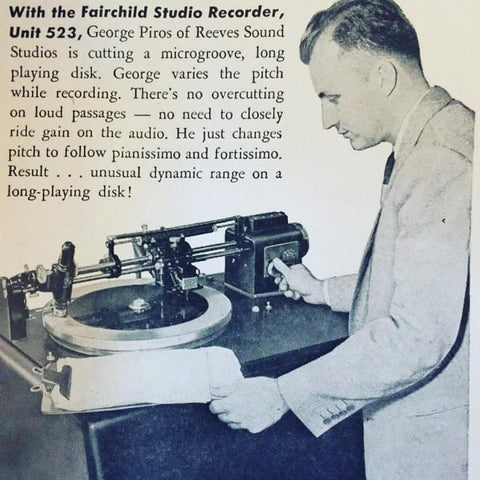In Copper #75, we began the story of the remarkable business empire created by Sherman Fairchild. Fairchild started over 75 companies, and as much as possible, we’ll focus on those directly involved in pro and consumer audio. Given the interconnectedness of the companies and the timespan of many decades, that’s easier said than done.
We’ve already mentioned Fairchild’s pioneering work in the creation of the first aerial cameras capable of sharp, repeatable images—due largely to the shutter mechanism incorporated within the lens itself, as shown in the patent drawing below. The cameras led to creation of purpose-built aircraft to house and transport them—the first monoplane built by the company was designed by no less than Igor Sikorsky.
As the depression deepened and business slowed, Fairchild sought out sub-contract work to keep the metalworking shops at Fairchild Camera busy. He encountered a gentleman named Crook—wait for it—looking for a company with the technical chops and production capabilities to develop and build devices that would record sound on aluminum discs. Intrigued by the technical challenge and presented with ready suppliers of aluminum and signed contracts from waiting buyers, Fairchild took on the project—on the basis of payment upon delivery of working equipment.
You can guess the rest. Here’s how Fairchild himself told it, decades later: “We had just about completed the design of the equipment when we discovered that Crook was more than the man’s name. All those contracts he had were fraudulent, forged. He disappeared and left us with the almost-completed equipment for cutting aluminum records.”
Rather than a lost cause, Fairchild was presented with entree into the broadcast world, and creation of a new division of Fairchild Camera devoted to mechanical and electronic devices for recording and broadcast studios.
As World War II approached, Fairchild’s aerial cameras proved vital for surveying and reconnaissance, and the aircraft divisions boomed as well: over 8,000 trainer aircraft were built during the war, used for pilot training. Further details of Fairchild’s importance in the world of aircraft can be read here.

Fairchild’s K-8 aerial Gunsight was another important contribution to Allied efforts in World War II.
Post-war, the camera division continued to prosper, and Fairchild Camera’s management decided to sell off the unprofitable audio division: the company’s products were always built to be the best available, and were priced accordingly. Unable to find a buyer, Sherman Fairchild bought it personally, and named it Fairchild Recording Equipment. A fair jazz pianist, Fairchild frequently recorded well-known musicians in recording studios in his homes. Fairchild Recording Equipment was an early developer of tape recorders, and for several years continued to offer disk recorders and lathes in parallel with tape recorders.

In the pro audio world, today Fairchild is best known for its model 660 (mono) and 67(stereo) limiters (compressors), built to military spec and beyond—as you can see by the engraved faceplate of the 670, at the top of this page, and the photo below. Out of production for sixty years, the 660 and 670 are still regarded by many as the best ever built—six of the units are still in use at the Abbey Road Studios, and when units become available for sale, prices approach $40,000. You can read an in-depth account of these legendary devices here.
The 660 and 670 were designed by an Estonian refugee named Rein Narma, whose incredible story includes walking away from his homeland, and being chosen in a refugee camp by American troops who needed an English-speaking radio expert. Subsequently, Narma recorded the stories of fellow refugees, and was involved in handling the simultaneous translation and recording gear at the Nuremberg trials!
His path upon reaching the US was no less incredible: he designed a mixing board and rebuilt a defective Ampex multitrack recorder for Les Paul, and subsequently, Fairchild personally hired Narma to be chief engineer at Fairchild Recording Equipment, where he designed the 660 and 670. You can read Narma’s amazing story here, and can read the manual of the model 670 here.
Fairchild studio gear was widely used by the most quality-conscious, including Robert Fine (of Mercury Living Presence recordings) and record-cutting legend George Piros, as shown below. In the next installment, we’ll go more into Fairchild’s studio gear, amazing projects they were involved in, their consumer gear, and more— in Copper #77.



